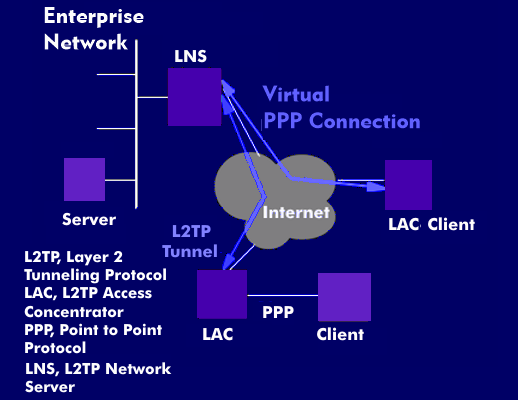layer 2 tunneling protocol (VPN) (L2TP)
The L2TP protocol is a VPN protocol on Layer 2 developed by the Internet Engineering Task Force( IETF) and described in RFC 2661. It is used for secure communication in virtual private networks (VPN), specifically for integrating individual computers into a network.
The Layer 2 Tunneling Protocol (L2TP) is the further development of Layer 2 Forwarding( L2F) and the Point to Point Tunneling Protocol( PPTP). L2TP supports packet-switched protocols such as Frame Relay( FR), ATM, Point-to-Point Protocol( PPP), and Ethernet.
By design, an L2TP tunneling architecture consists of an L2TP server and an L2TP Access Concentrator( LAC). The L2TP Network Server( LNS) operates as a node on one side of an L2TP tunnel and forms the peer to the L2TP Access Concentrator (LAC). The LNS server forms the logical termination of a PPP session that is tunneled from the remote system to the LAC concentrator. The L2TP Access Concentrator is located between the L2TP network server and the remote system and forwards the data packets between the two.
The L2TP server monitors the data packets and provides routing. An L2TP tunnel can be established from the client, which communicates with the L2TP concentrator (LAC) via the point-to-point protocol (PPP). This forwards the data packets to the L2TP server, which is connected directly to the local corporate network and receives an IP address from there.
Since the L2TP protocol only supports user authentication, the IP Security Protocol( IPsec) is used in conjunction with L2TP as an encryption mechanism. The tunneling method ensures private IP addressing and therefore does not require IPSec between end nodes.


